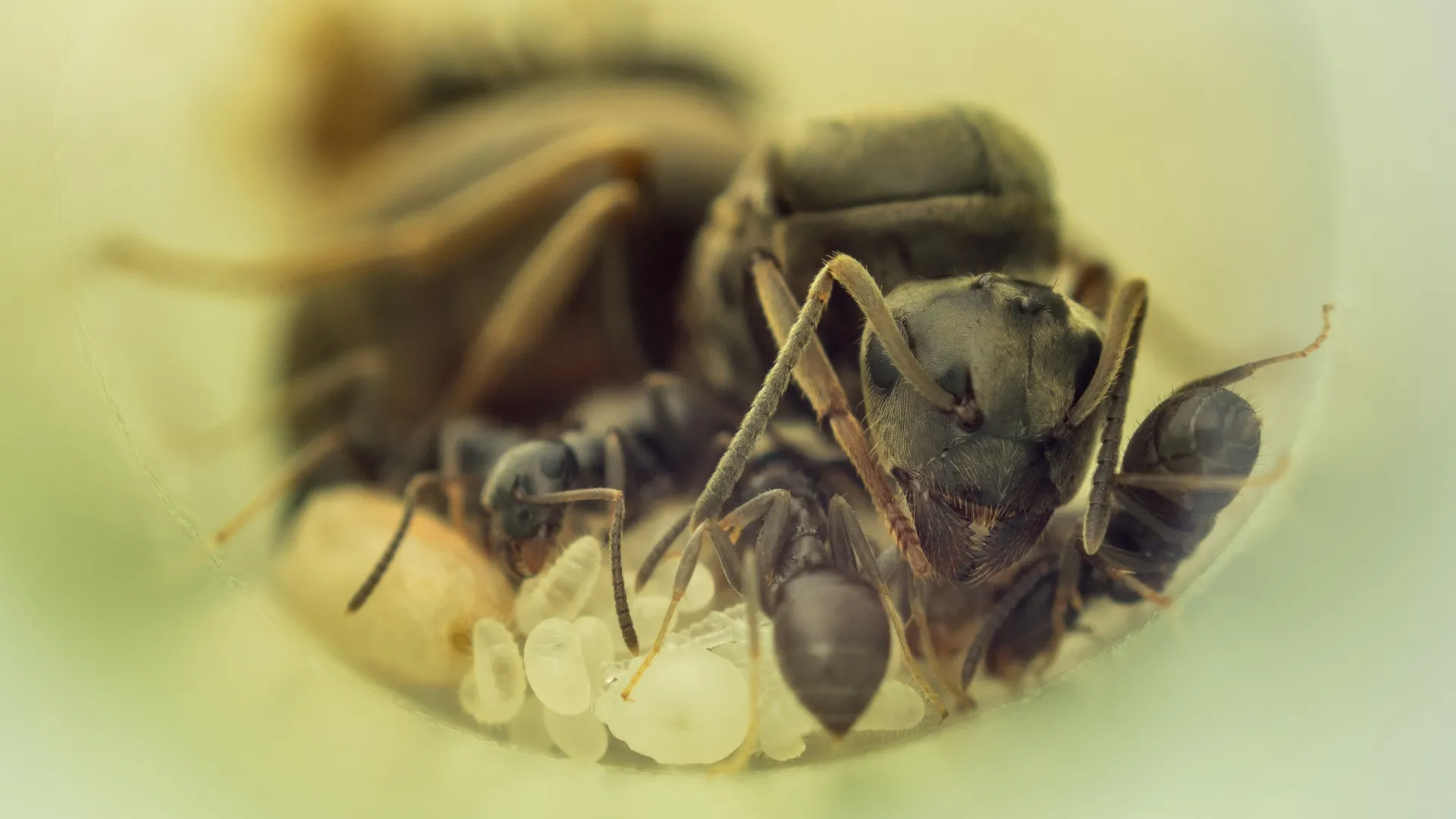Ants
Ants are eusocial insects of the order Hymenoptera. Ant colonies consist of several hundred to millions of animals, which are organized in castes. The majority of the colony is made up of worker ants. The number of queens varies depending on the species. There are polygynous species with up to hundreds or even thousands of queens and monogynous species with only one queen each. There are also intermediate forms. Ants are omnivorous, but most species have one primary food source. The ant species Lasius niger, mainly a nuisance species in Central Europe, obtains most of its food from honeydew, a sugary excretion of aphids.

Ants have a powerful economic impact worldwide, as they can act as pests of health, plants, materials, and supplies. Due to their sometimes very small body size, infestations are often discovered late, making control difficult.
In our breeding, we keep sensitive strains of those ants that are relevant as health pests:
- Monomorium pharaonis (pharaoh ant)
- Tapinoma melanocephalum (ghost ant)
- Lasius neglectus (invasive garden ant)
In addition, we breed:
- Lasius niger (black garden ant)
